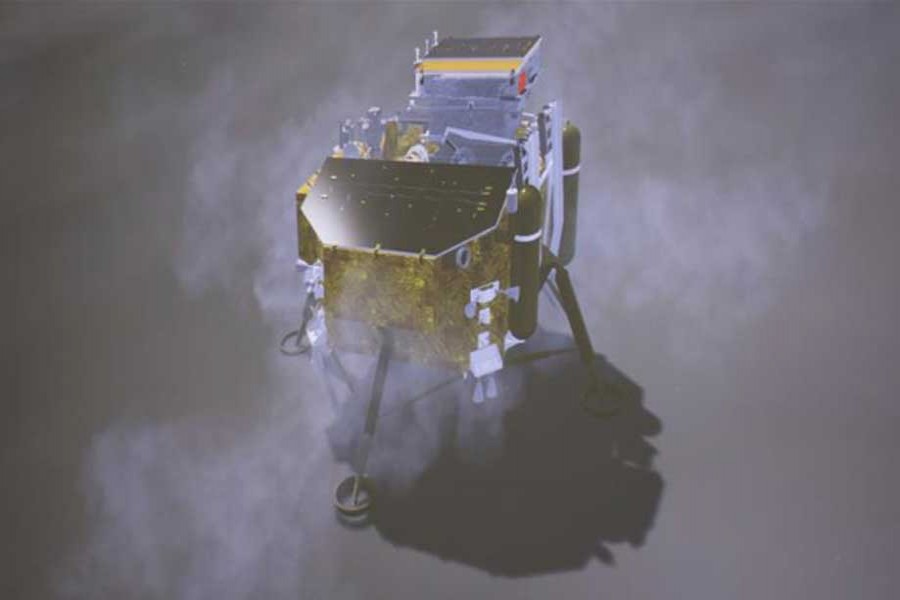
Published :
Updated :

A Chinese probe has made the first-ever landing on the far side of the moon, according to state media, in a groundbreaking mission in space exploration.
The unmanned Chang'e 4 spacecraft successfully touched down at 10:26am (02:26 GMT) on Thursday on a preselected landing area, state media said.
It relayed a photo of the "dark side" of the moon to the Queqiao satellite, which will relay communications between controllers on Earth and the far side of the moon, reports aljazeera.com.
The moon is tidally locked to Earth, rotating at the same rate that it orbits our planet, so the far side is never visible from Earth and relatively unexplored. Previous spacecraft have seen the far side of the moon but none has landed on it.
The soft landing "lifted the mysterious veil" from the far side of the moon and "opened a new chapter in human lunar exploration," state media said.
The tasks of the Chang'e-4 include astronomical observation, surveying the moon's terrain, landform and mineral composition, and measuring the neutron radiation and neutral atoms to study the environment on the far side of the moon, the China National Space Administration has said.
The probe, which includes a lander and a rover and is also equipped with a panorama camera, will perform radio-astronomical studies that, because the far side always faces away from Earth, will be "free from interference from our planet's ionosphere, human-made radio frequencies and auroral radiation noise", according to space industry expert Leonard David.
In 2015, NASA, the US space agency, released an animation that shows satellite images of the far side of the moon.
NASA says the images show the moon illuminated by the sun, as it crosses between the DSCOVR spacecraft's Earth Polychromatic Imaging Camera and telescope, and the Earth - one million miles away.


 For all latest news, follow The Financial Express Google News channel.
For all latest news, follow The Financial Express Google News channel.